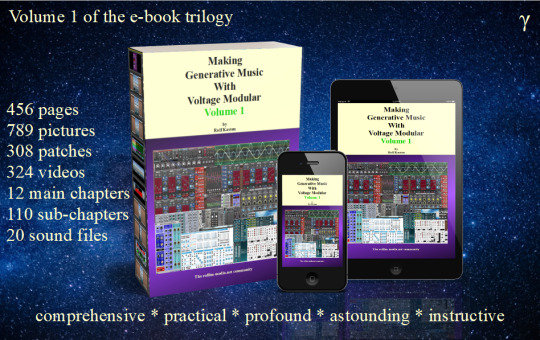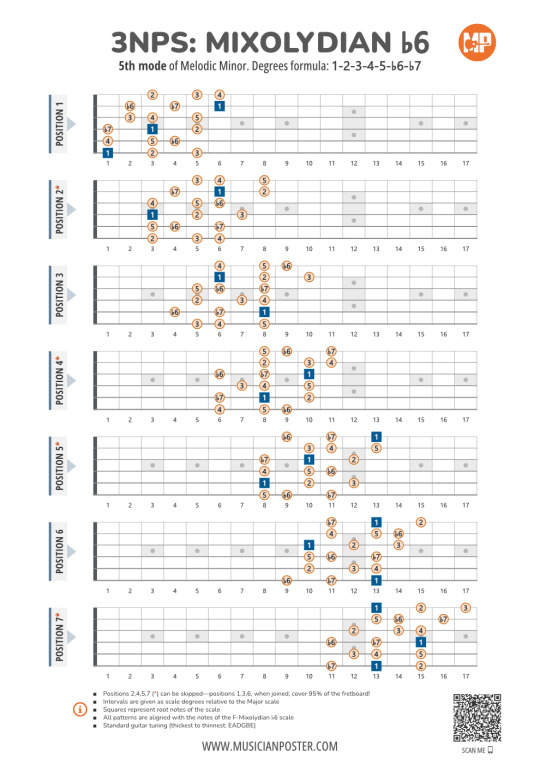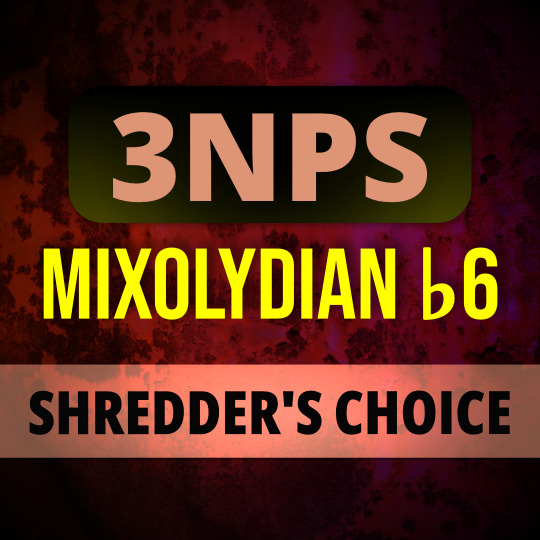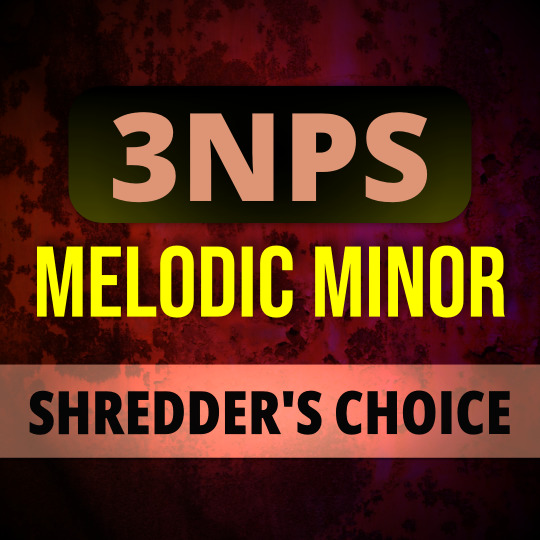#Musictheory
Explore tagged Tumblr posts
Text
SHEET MUSIC GUIDE
Download PDF















2 notes
·
View notes
Text

bless the internet for providing Emo SpongeBob #SteveReich
#musictheoryaugmented#music theory augmented#music theory#musictheory#music history#musichistory#musicology#music majors#music major#musicmajors#musicmajor#music students#music student#phd#college#academia#gradschool#university#grad school#conservatory
28 notes
·
View notes
Text
youtube
#musicproducer#musicproduction#musicmaker#beatmaker#beatproducer#musicmixing#mixandmastering#musicproductiontips#musicproductiontipsandtricks#tipsandtricksforproducers#musicproductiontutorial#tutorials#productiontutorial#productiontips#productiontipsandtricks#musiclifestyle#producerlifestyle#producermeme#producermemes#musicproductionmemes#musictheory#musictheorymemes#musictheorylessons#musictheoryforproducers#producermistakes#Youtube
2 notes
·
View notes
Text

γ
What are the ingredients for generative music, and how do the “kitchen tools” work, the tools I process these ingredients with?
#GenerativeMusic#ModularSynths#ElectronicMusic#MusicProduction#MusicCreativity#SoundDesign#MusicInspiration#MusicComposer#Synthesizer#MusicInnovation#CreativeExpression#MusicArtists#MusicTheory#MusicEducation#MusicCommunity#MusicPassion#MusicJourney#SynthPatches#AudioExperimentation#MusicalInspiration#MusicExploration#ElectronicArt#AudioAdventures#MusicalDiscovery#MusicMakers#SoundExploration#learningmodular#vcv#vcvrack#vcvrack2
2 notes
·
View notes
Video
youtube
Episode 086 | Algorythm C
#youtube#beats#musicproducer#music#algoc#keepcreating#cultivate#hiphop50#interview#musictheory#musician#chillbeat#newartist#musicpodcast
2 notes
·
View notes
Text
3NPS Mixolydian b6 Patterns for Shredding
Mixolydian b6 is here - 3NPS Patterns for the 5th mode of Melodic Minor!
The chart is already available in all 3 common variations that I usually produce:
■ with beginner-friendly note names ■ as scale degrees ■ and as flat style notes for those who like it clean!


Download them all here (variations are linked down at the bottom)
This week I'm finishing up 3NPS for Shredding series with Hungarian Minor patterns and next week I'm starting a new series! Stay tuned!
If you find this content helpful, I'd appreciate any kind of support—a Like, a share, or a comment—everything helps! Have fun learning! Oleg
#guitarplayersofinstagram#guitarlessons#guitarplayersdaily#talentedmusicians#rock#musictheory#musicproducers#studymusic#sing#musicianposter#musicposter
2 notes
·
View notes
Text
A Brief History of Music Notation in the 19th Century
The 19th century witnessed significant advancements in music notation, paving the way for greater precision and expressiveness.
Standardization of Notation:
The 19th century saw a gradual standardization of music notation across Europe.
Key signatures became more consistent, and rhythmic notation evolved to accommodate the complexities of Romantic music.
Composers like Beethoven and Chopin pushed the boundaries of musical expression, requiring more nuanced notation to capture their ideas.
Rise of the Piano:
The increasing popularity of the piano during the 19th century significantly influenced music notation.
Composers developed more sophisticated ways to notate pianistic effects like pedal markings, dynamic shifts, and intricate textures.
Technological Innovations:
The invention of the printing press in the 15th century revolutionized music notation.
In the 19th century, advancements in printing technology allowed for greater clarity and affordability of printed music.
This facilitated the wider dissemination of music and contributed to the growth of a burgeoning musical amateur culture.
Expressive Notations:
Romantic composers sought to convey a wider range of emotions through music.
This led to the development of new notational devices to express nuances like rubato (flexible tempo), crescendos and diminuendos, and a variety of dynamic markings.
Key Figures and Movements:
Beethoven: Pioneered the use of extended dynamic markings and innovative rhythmic structures.
Chopin: Developed highly expressive notations for piano, capturing delicate nuances of touch and phrasing.
Wagner: Created his own system of music notation to convey the complex orchestration and dramatic effects of his operas.
The 19th century saw a remarkable evolution in music notation, laying the groundwork for the diverse and expressive musical landscape of today.
Siglo 19 is a blog about celebrating the music written in The XIX century all over the world. We acknowledge music notation and the practice of music as a discipline and alternative to enhance our life. We appreciate visual arts, science and literature related to the XIX century. We hope you have a good time visiting this blog. If there is something that you like share it with the world feel free to comment. Thanks for visiting.

#19thCenturyMusic#ClassicalMusic#MusicHistory#MusicNotation#RomanticMusic#Beethoven#Chopin#Wagner#MusicTheory#Piano#Opera#ArtHistory#VisualArts#Literature#Science#History
508 notes
·
View notes
Text
The Neutral Wisdom Podcast: The Music of Lesser Magic with Magister Bill M.
The Music of Lesser Magic with Magister Bill M. Music and Lesser Magic: Both tools which can be used to evoke a response from people. We put a set of notes together to make music, or we put a set of skills together to make magic; in either case, we achieve our desired outcomes through influence. As such, is there a correlation between music theory (the “language” of music) and the elements we…
#Church of Satan#lesser magic#Magic#magister bill m.#music#MusicTheory#Neutral Wisdom#satanic magic#Satanism
0 notes
Text
youtube
Music Theory Masterclass: Drilling the Basics
0 notes
Text
Ready to learn how to draw music notes? 🎶🎨 Check out this beginner’s guide and start mastering the basics today! 🎵✏️
#MusicNotes#DrawingMusic#MusicTheory#BeginnerGuide#LearnToDraw#MusicArt#CreativeJourney#MusicLovers#ArtAndMusic
0 notes
Text
Beginner’s Guide to Making EDM Music: Essential First Steps for New Producers
Electronic Dance Music (EDM) has become one of the most popular genres worldwide, captivating audiences with its energetic beats and pulsating rhythms. If you’re new to music production and eager to begin making your own EDM tracks, this guide will take you through the essential first steps to get started.
1. **Set Up Your Digital Audio Workstation (DAW)**
A Digital Audio Workstation (DAW) is the software you’ll use to create, arrange, and mix your music. Some of the most popular DAWs for EDM production include **Ableton Live**, **FL Studio**, and **Logic Pro**.
- **How to Choose**: If you’re just starting out, consider using a DAW with a user-friendly interface, such as FL Studio, which is known for its simplicity. Ableton Live is highly favored for live performance capabilities and its ease of use for EDM.
- **Pro Tip**: Take the time to explore tutorials and guides for your DAW. Understanding its core features will save you time later on when you’re diving deep into production.
2. **Learn Basic Music Theory**
While EDM music relies heavily on beats and production techniques, a basic understanding of music theory can elevate your tracks. Learning about scales, chord progressions, and melodies will help you craft catchy hooks and compelling harmonies.
- **Start Simple**: Begin with the basics of major and minor scales, and try to construct simple chord progressions.
- **Pro Tip**: If you’re not familiar with music theory, use tools like **Scaler** or MIDI chord packs, which help generate chords and progressions for your tracks.
3. **Understand Sound Design and Synths**
Sound design is a fundamental aspect of EDM music. You’ll need to experiment with synthesizers to create the unique sounds that define your tracks, such as basslines, leads, pads, and effects.
- **VST Plugins to Explore**: Start with popular synths like **Serum**, **Massive**, or **Sylenth1**, which offer a wide range of sound possibilities.
- **Pro Tip**: Explore presets to get started, and gradually learn how to tweak parameters such as oscillators, filters, and envelopes to craft your own unique sounds.
4. **Master Drum Programming**
Drums are the backbone of any EDM track. You’ll need to create a solid foundation with kick drums, snares, hi-hats, and percussion. Drum programming sets the rhythm and energy of your track, so focus on creating tight, punchy beats.
- **Use Drum Samples**: Most DAWs come with built-in drum samples, but you can also invest in premium sample packs for a wider variety of high-quality sounds.
- **Pro Tip**: Layer your kick drum with a sub-bass to add more punch, and use sidechain compression to make your drums cut through the mix.
5. **Start With Simple Song Structures**
EDM tracks follow certain song structures that build tension and release energy in key moments. As a beginner, start with simple structures like intro-verse-chorus or build-drop-build-drop patterns.
- **Build Energy**: Pay attention to how other EDM songs build energy leading into the drop. This often involves adding risers, sweeps, and transitions.
- **Pro Tip**: Break down your favorite EDM tracks and reverse-engineer their structure to better understand the genre’s dynamics.
6. **Focus on Mixing and Sound Quality**
The final mix is crucial for making your track sound professional. You’ll need to balance levels, EQ different elements, and apply compression to control dynamics.
- **Balance the Elements**: Make sure your kick drum, bass, and synths are not fighting for the same space in the mix. Use EQ to carve out space for each element.
- **Pro Tip**: Don’t overcomplicate your mix. Focus on keeping the sounds clean, and use reference tracks to guide your mixing decisions.
7. **Start Small and Keep Practicing**
Creating a full EDM track can be overwhelming, so don’t rush the process. Start small by focusing on short loops, beat ideas, and sound design exercises. The more you practice, the more confident you’ll become.
- **Pro Tip**: Set aside time each week to work on music, and don’t be afraid to experiment. Even if an idea doesn’t work out, you’ll learn something valuable in the process.
Conclusion
Becoming an EDM producer takes time, dedication, and a lot of experimentation. By mastering the basics of DAW usage, drum programming, sound design, and mixing, you’ll be well on your way to creating your own dancefloor-ready tracks. Keep practicing, stay inspired, and most importantly—have fun with the creative process!
0 notes
Text

30)
How to build a generative multidimensional sonic space
Read it on 15th November on my website https://dev.rofilm-media.net
#multidimensional#dimensions#multidimensionalmusic#GenerativeMusic#ModularSynths#ElectronicMusic#MusicProduction#MusicCreativity#SoundDesign#MusicInspiration#MusicComposer#Synthesizer#MusicInnovation#CreativeExpression#MusicTheory#MusicEducation#SynthPatches#MusicalInspiration#MusicExploration#ElectronicArt#AudioAdventures#MusicMakers#learningmodular#vm#voltagemodular#cherryaudio
0 notes
Text

Dark Ambient, Space Ambient, New Age Ambient, Ambient Techno, Liminal Ambient.
11 comprehensive projects, each step by step explained with 344 graphics and included nearly 2 hours of video, 58 preset and 63 samples.
Click here to read more about it: https://www.dev.rofilm-media.net/node/672
#Ambientmusic#Ambient#ElectronicMusic#MusicProduction#CherryAudio#MusicCreativity#SoundDesign#MusicInspiration#MusicComposer#Synthesizer#MusicInnovation#CreativeExpression#MusicArtists#MusicTheory#MusicEducation#MusicCommunity#MusicPassion#MusicJourney#SynthPatches#AudioExperimentation#MusicalInspiration#MusicExploration#ElectronicArt#AudioAdventures#MusicalDiscovery#MusicMakers#SoundExploration
0 notes
Text
Spellcasters are just conductors of the arcane
this may just be me going into overanalysis mode but i feel like the choreography of spellcasting can tell you so much about a magic user. a snap of the fingers, for example, implies confidence, even arrogance, while hands thrust out and straining to the fingertips suggests desperation, throwing one's whole body into the spell as though hoping the physical effort will make a difference. rapid, jerky body language tells you that a spellcaster is passionate and reckless, while graceful, fluid movements demonstrate calm and concentration. some magic users may choose to stomp their feet or clap their hands when casting, channeling power through percussive motion, whilst others may see magic as a tool separate from the self, and focus is through objects like a wand or staff. a new spellcaster just coming into their power may be tentative and slow, but a practiced study of magic will be able to rely on muscle memory to guide them.
32K notes
·
View notes
Text
3NPS Melodic Minor Patterns for Shredding
I've just released the last of the common Minor scales for the 3NPS system: the Melodic Minor scale patterns.
The chart is already available in all 3 common variations that I usually produce: ■ with beginner-friendly note names ■ as scale degrees ■ and as flat style notes for those who like it clean!


Download them all here (variations are linked down at the bottom):
And we're getting closer to finishing the 3NPS for shredding series. Still a couple of scales left in the family of Melodic Minor and one scale from the Double Harmonic Major scale.
Hope you have fun with it!
If you find this content helpful, I'd appreciate any kind of support—a Like, a share, or a comment—everything helps! Have fun learning! Oleg
#guitarplayers#guitarlesson#guitarpractice#musicman#instamusic#singers#musictheory#musicproducer#acousticguitarcover#musicianposter#musicposter
2 notes
·
View notes
Text
youtube
🎥I answered some tech questions🚀
Best Sound? Depends on skills and tech. Do More Faster? Yes, we’re now full music producers. Reach New Fans? Tech helps, but competition is tough. Impact of Tech? More solo time and stress. Watch the full video here: https://youtu.be/4vdWHqq09X8
#musictech #productiontips #youtubecontent
0 notes